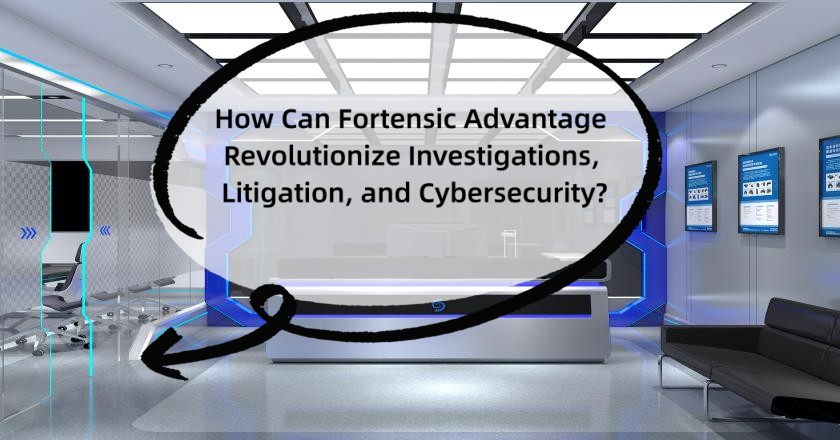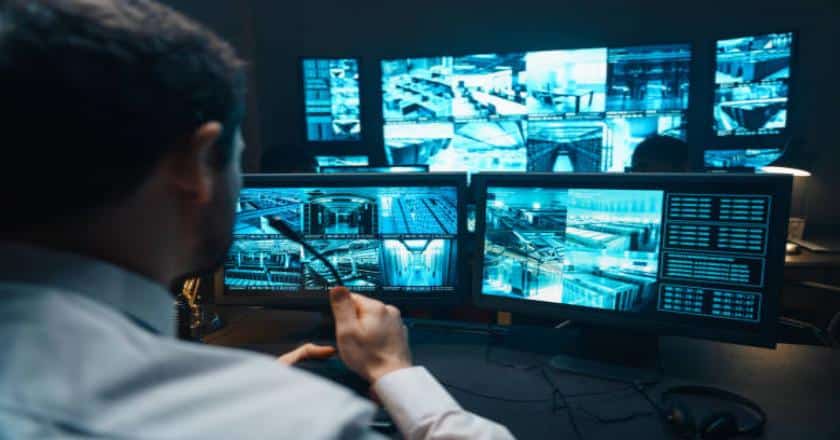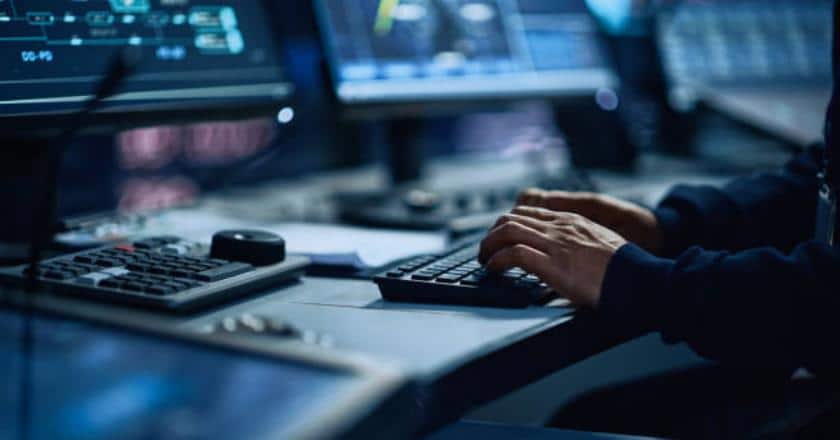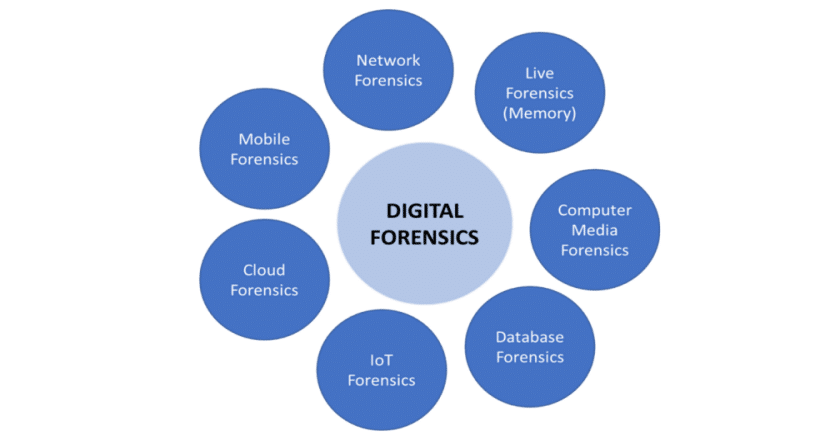How Can Forensic Advantage Revolutionize Investigations and Cybersecurity?

-
Content
- Intro
- Forensic Advantage in Investigations
- Forensic Advantage in Litigation
- Forensic Advantage in Cybersecurity
- Forensic Advantage in Financial Analysis
- Conclusion
-
Content
- Intro
- Forensic Advantage in Investigations
- Forensic Advantage in Litigation
- Forensic Advantage in Cybersecurity
- Forensic Advantage in Financial Analysis
- Conclusion
Intro
Forensics is the method of collecting, analyzing, and preserving evidence to be used later in criminal and civil investigations. Forensic advantage solutions is when there is solid evidence using forensic techniques that proves or disproves a particular crime such as murder, assault, cyber attacks, and so on. Be it cybercrimes, legal cases, financial frauds, and intellectual property theft, etc. Forensic advantage plays a crucial role in numerous domains.
In this article, you will know more about how forensic advantage software can be used for the following:
- Preserving evidence – collecting and reviewing evidence to ensure its integrity, thus making it admissible in court.It helps build a strong case and increases the chances of conviction (or proving someone innocent).
- Identifying criminals – tracing origins of cyber attacks, identifying the source of a leak, and linking the suspect to a crime scene.
- Protecting corporate interests-identifying and preventing internal fraud, data breaches, and other cyber threats. It helps protect sensitive data and information, while mitigating future attacks.
Forensic analysis is not an easy task to accomplish, but when implemented correctly with forensics tools from SalvationDATA, it becomes an easy task, and this is why law enforcement agencies are highly dependent upon forensics to establish justice.
Forensic Advantage in Investigations
Forensic advantage in criminal investigations
After commencement of the crime, it is up to the law enforcement agencies to collect evidence from the crime scene and eventually catch the perpetrator. It is forensic science that that deals with the analysis of those evidence to establish the facts admissible in the court of law. Basically, it provides information through analysis of physical evidence and identity of the culprit through personal clues that associate with the criminal through objects left by him at scene like a fingerprint, blood drop or hair, footprints, mobile phones or any other gadgets.
Various forensic techniques are used in collecting evidence from the crime scene, such as:
- Fingerprinting- Every person has a unique pattern of ridges and furrows on their fingers, making fingerprints a reliable form of identification. Forensic experts collect fingerprints from crime scenes and compare them with known prints from suspects or those stored in databases.
- Digital Forensics: Digital forensics involves the recovery, analysis, and preservation of electronic evidence such as data from computers, smartphones, or other digital devices. Digital forensics experts use specialized tools and techniques to extract and examine digital evidence for investigative purposes.
- DNA analysis– DNA analysis can provide valuable evidence in various criminal cases, including homicides, sexual assaults, and burglaries.It helps in identifying individuals, establishing biological relationships, and linking suspects to crime scenes.
Forensic advantage in real-life cases
- Serial killer Ted Bundy could only be convicted of kidnapping in 1977. But after he escaped to Florida and killed others, he was arrested in 1978 and convicted with the aid of physical evidence. The most vital evidence was a bite mark on the buttock of victim Lisa Levy that matched to his distinctive, crooked and chipped teeth.
- The Lindbergh Kidnapping is one of the most famous cases to be solved with forensic evidence. Charles Lindbergh Jr., the 20-month-old son of the famous aviator was kidnapped, but not returned even after the ransom was paid. His body was discovered in May just a few miles from his home. The culprit, Bruno Hauptmann was arrested – key evidence was handwriting analysis on ransom notes and the wood used in his attic to build the ladder to reach the child’s window.
Forensic Advantage in Litigation
Legal cases are aided by forensic advantage
Forensics advantage services use scientific techniques and methods, so there is absolutely no room for bias or discrimination, which is why such evidence is recognized in courts around the world. Forensic advantage can be used to both convict and exonerate suspects. In the courtroom, it involves the reports from the crime scene, and presentation of digital evidence along with experts testifying as witnesses. Expert testimonials offer an important informational source in international criminal proceedings, and forensic expertise is no exception – trials and judgments have been based on findings from exhumations and examinations.
Forensic experts as witnesses
A forensic expert can submit their observation or findings, along with their opinion on the facts that could be relevant to determining the truth of the allegations that are the subject of proof. A lawyer is obliged to consult with an expert witness on any matter for which there is no solution on professional competence. The expert can be asked to present a forensic report too, in order to clarify certain points. If they are present at the crime scene investigation, reconstruction, or other investigative proceeding, they may propose that certain circumstances be clarified or that person on trial be asked certain questions. Afterwards, the court takes all the evidence into the account as established by the testimony to establish or clarify any facts necessary.
Forensic advantage in influencing outcomes
Witnesses might include ballistic experts, forensic experts, scientists, chemical examiners, psychiatrists, radiologists, and so on. Evidence from the crime scene provides accurate information through the study of physical evidence, as well as the identification of the perpetrator through personal indicators such as fingerprints, footprints, blood droplets, or hair. It connects the perpetrator to the crime by artifacts left at the site and with the victim, or transported from the scene and with the victim. If the discovered clues don’t connect the accused to the victim or place them at the location of the crime, then the person on trial is presumed to be “innocent”.
Forensic Advantage in Cybersecurity
How can cybersecurity use forensic advantage?
Cyber crimes are shooting up with each passing day, but cyber threats always leave behind activity logs and metadata (it is necessary to know “what is digital forensics”).
This is where forensic advantage comes into play –investigators analyze these electronic data to find the tools the attacker used, as well as their chosen method of launching a cyber attack. Computer forensics experts play a major role in finding and preserving evidence related to the incident, which might become obsolete later. Digital forensics can be useful in the following ways:
- Intellectual property (IP) and internal investigations that include IP theft, industrial espionage, IP misconduct, fraud, personal injury or death, or sexual harassment.
- Data recovery to retrieve stolen or lost information in devices.
- Damage analysis to leverage digital forensics to discover vulnerabilities and remediate them to prevent future cyber attacks.
- Cases involving wire fraud and money laundering schemes.
- National security agencies usedigital forensics to monitor email communications among persons of interest while constantly looking for any signs of a terrorist attack.
Detecting and mitigating threats
There are different types of digital forensics such as computer forensics, mobile forensics, cloud forensics, video forensics, email forensics and so on. Identifying digital evidence ensures that investigators collect the right evidence and that isn’t contaminated by other data sources. They identify the problem, determine the kind of crime committed, types of devices involved, etc. It involves identifying who or what is involved in the crime by looking at metadata related to the digital evidence, such as video files. This allows investigators to determine whether or not the data itself is necessary for their investigation. Detailed forensic analysis is conducted to seek additional data that could be helpful. Specialized digital forensics software is used to sort through evidence quickly and efficiently. The findings have to be documented to be presented in court as evidence later on. Presentation assembles multiple angles of security incidents together, helping investigating bodies come to a conclusion.
Preservation of digital evidence
The problem with digital information is it can be easily altered or destroyed, if not handled properly; hence it should be preserved to ensure it is safe from tampering. It maintains the integrity of the evidence, which might be required in legal proceedings.
Digital forensic examiners typically use image backup files while preserving the evidence. It is important ensure that the examiner doesn’t leave any additional footprints while creating the image. Imaging software helps them to evidence tampering. Access logs and data backups are dynamic as devices and gadgets keep on receiving and changing information. Forensics examiners need to extract digital artifacts such as data packets, event logs, and containers and preserve them to prevent overwriting.
Forensic Advantage in Financial Analysis
Financial investigations use forensic advantage
Financial fraud is on the rise, which is why it is imperative to implement forensic advantage in financial investigations. With forensic technologies’ advancement, the ability to collect data from a plethora of new devices – computers, smart phones, tablets, servers or cloud servers – and storage media, such as external hard drives, thumb drives and compact discs, have become easier. Forensic accounting and auditing is used in litigation when quantification of damages is required. Parties involved in legal disputes use the findings of a forensic accountant to resolve disputes via settlements or court decisions, such as compensation or benefit disputes. When there is a crime involved such as employee theft, securities fraud, insurance fraud or falsification of financial statement information, it is the job of forensic investigators to get to the bottom of the matter.
Applying accounting and auditing techniques
Using forensics, investigators analyze, interpret, and summarize complex financial data. It involves the use of forensic accounting, auditing, and investigative skills to examine the finances of an individual or business. Forensic accountants basically look for evidence of crimes, and work for insurance companies, financial institutions, and law enforcement agencies. They compile financial evidence, develop computer applications to manage the information collected, and communicate their findings in the form of reports or presentations. To put it in a nutshell, their tasks involve detecting frauds, asset identification & recovery, and due diligence reviews.
Safeguarding integrity and minimizing risks
To mitigate the risks of financial crime, companies have to change the way they manage crime risks or conduct financial crime investigations, by leveraging forensic advantage. Here is what they can do:
- Deploy technology to detect risks associated with business partners like agents, distributors, employees and vendors.
- Perform periodic forensic data analyticson past financial accounting and operational data for indicators of control weaknesses or signs of potential fraud.
- Use continuous monitoring technology to promptly detect indicators of control weaknesses or signs of potential fraud.
- Perform proactive cyber threat analysis on internal systems to look for signs of data breaches or leaks.
Conclusion
Forensic science is a critical element of the criminal justice system. To ensure forensic advantage, it is necessary to examine and analyze evidence from crime scenes and elsewhere to develop objective findings that can assist in the investigation and prosecution of perpetrators of crime or absolve an innocent person from suspicion.
Now that you have read the article, you know exactly Why is digital forensics important? In the age of technology, it is crucial to use forensic advantage when it comes to cyber threat, financial frauds and legal matters, and so on. SalvationDATA offers digital forensics and data recovery solutions in the form of advanced software and hardware that can retrieve lost or deleted data from a wide range of devices. So if you are concerned about financial frauds, data breaches, or any other form of cyber threat, please get in touch with them right away. Apart from that, it has training programs in digital forensics as well, so if you are looking to equip employees with skills and knowledge, so they can become experts and conduct investigations effectively, SalvationDATA is exactly whom you should approach!




